PTFE tubing – variants, production and applications
The evolution of polytetrafluoroethylene (PTFE) – better known as Teflon® – from a niche product for high-value applications to a mainstream requirement has been gradual. Over the past two decades, however, as a result of increasing commercial use in more than 200 industrial, consumer and medical applications, PTFE has become a significant material in multiple application contexts. While sheets, rods, coatings and components once accounted for the majority of the market for PTFE products, PTFE tubing is now emerging as the key growth area.
Applications of PTFE tubing
PTFE tubing is used in various fields such as automotive, chemical, electrical and medical. Table 1 shows the key properties that illustrate the versatility of PTFE tubing, while Fig. 1 shows the potential applications in various fields. In the Automotive industry, PTFE’s high-temperature resistance of over 250 °C makes it ideal for transferring fluids at high temperatures and high efficiency in mechanical cables. In medical applications, PTFE tubing is in great demand, justified by its excellent sliding properties and chemical inertness. Thus, catheters consisting of PTFE tubing can be inserted into the human body without any negative consequences. In chemical applications such as laboratories, PTFE is an ideal substitute for glass due to its inertness and durability. In the field of electrical engineering, PTFE is suitable for insulating high-voltage cables thanks to its excellent dielectric properties.
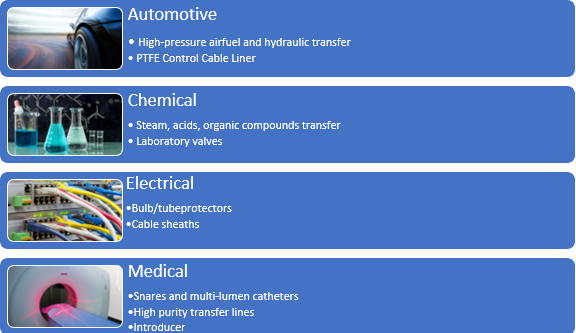
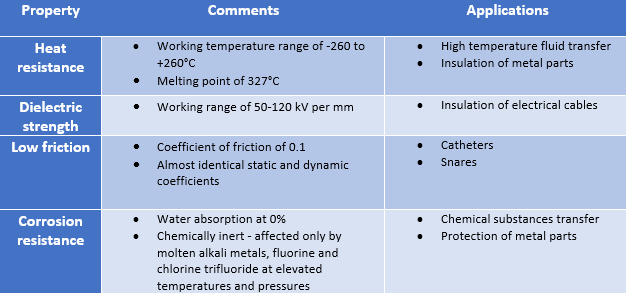
Types of PTFE tubing
Corresponding to the field of application, PTFE tubing is classified along with three main categories, which are respectively defined based on the diameter and the tubing’s wall thickness (see Table 2).

While spaghetti tubing is primarily used in medical technology, the PTFE pressure hose, and the PTFE liner are often used in the automotive segment.
Even within categories, PTFE tubing lends itself to different variations, each allowing for a different application (Table 3):
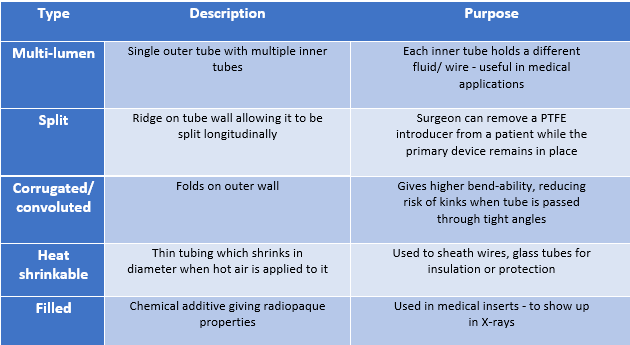
PTFE tubing in the medical equipment market.
In general, small-diameter spaghetti tubing is primarily used in the medical device industry. Two key properties are crucial for the use of PTFE in this field: lubricity and biocompatibility. Compared to other plastics, fluoropolymers are characterized by very good lubricity. PTFE is the most lubricious polymer available, with a coefficient of friction of 0.1, followed by fluorinated ethylene propylene (FEP) at 0.2. Accordingly, these polymers make up the vast majority of all fluoropolymer tubing used in medical devices.
The issue of biocompatibility of any polymer used in a medical device is extremely significant. PTFE is particularly well suited for use in this area and has long been used „in vivo“.
Processing techniques
The uniqueness inherent in PTFE tubing stems from the complexity of PTFE as a polymer. While most polymers can be easily injection molded, allowing complex shapes, PTFE can only be produced by compression molding due to its high melting point and exceptional melt viscosity. Change to PTFE can be produced by compression molding or cold paste extrusion. The high melting point of PTFE also makes the extrusion process – as it is usually performed – impracticable. Specialized PTFE paste extrusion is therefore an increasingly utilized process as a result of the growing demand for PTFE tubing. Extruded versions of PTFE were first used in the wire and cable industry in the 1950s, with its excellent dielectric properties, in particular, proving crucial to the developing electronics market. The first such tubing was manufactured by extruding PTFE over a wire, including subsequent removal – a labor-intensive process. In the 1960s, a technique was developed that enabled PTFE to be extruded without a wire core. By means of this process, PTFE tubing can be produced economically in long, continuous lengths. PTFE paste extrusion is performed in 6 major phases, which are explained below:
- Mixing: The synthetic resin is powdered and has an average particle size of about 0.5 mm. This waxy powder responds sensitively to bruising and mechanical shear fibrillation. Accordingly, special care must be exercised during processing, which is generally carried out at a temperature of around 20°C. Whereas in conventional compression molding the powder only has to be thoroughly sieved and then compacted, during the paste extrusion process it is initially mixed with a hydrocarbon extrusion aid or alcohol. The powder/spirit mixture subsequently remains in a sealed container for 8-10 hours, in order to be processed in the further procedure.
- Pre-form: The Pre-form represents a cylindrical-shaped billet molded from the prefabricated mixture by means of hydraulic pressure. The forming of a 30 kg billet requires about 2 hours. Subsequently, a dwell time of 8 hours is required to ensure the release of excess air inclusions.
- Extrusion: The raw billets are inserted into the extruder – which is the central component of the process – whereupon a die and a mandrel get installed above it. During the extrusion process, the die acts as a crucial instrument in determining the pipes’ final strength and dimensions. By starting the extrusion process, the pre-form is pressed by the extruder against the die and mandrel, forcing the polymer material into the desired shape. In this phase, the tubing is labeled as “green” and proves to be susceptible to mechanical deformation. Pre-sintering: the green tubing is passed through an oven where it is heated at a very low temperature. The idea here is to evaporate the spirit in the tube, and care must be taken so that the flashpoint of the spirit is not reached, causing it to ignite.
- Sintering: The PTFE tubing is sintered at 350-400°C. Depending on the thickness of the specimen, the duration of the sintering cycle varies and may last up to 24 hours in the case of thick-walled tubing.
- Cleaning and packaging: Next, the tubing is cut into the required lengths. For medical hoses, sealing of the tubing ends is necessary immediately after the material has been removed from the oven. This closure ensures the cleanliness of the inner surfaces of the tubing, which has already been exposed to temperatures far exceeding 300 °C. The subsequent cleaning process requires an ISO Class VI clean room as a minimum standard for PTFE tubing. Upon completion of the cleaning process, they are finally packaged in polyethylene sleeves for shipment.
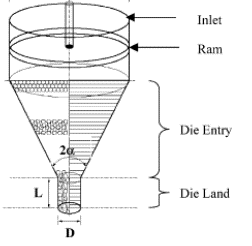
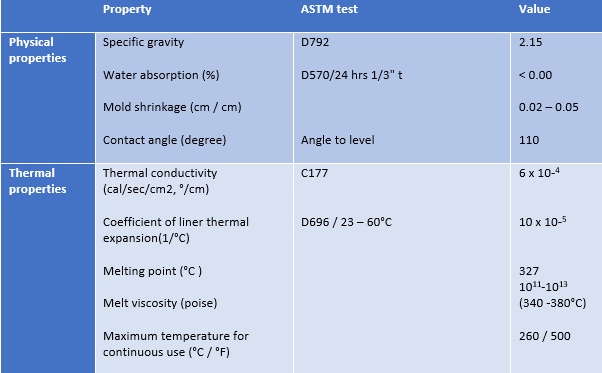
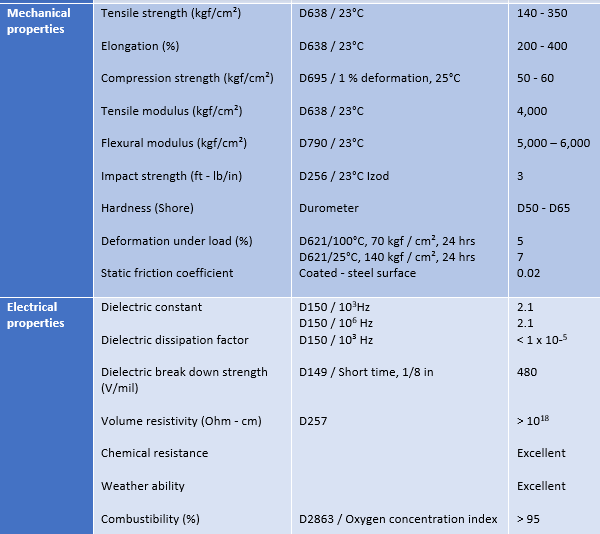
We would be pleased to advise you on our product range and the possible applications of the Fitcoflex woven hose polyethylene. Please contact us!



